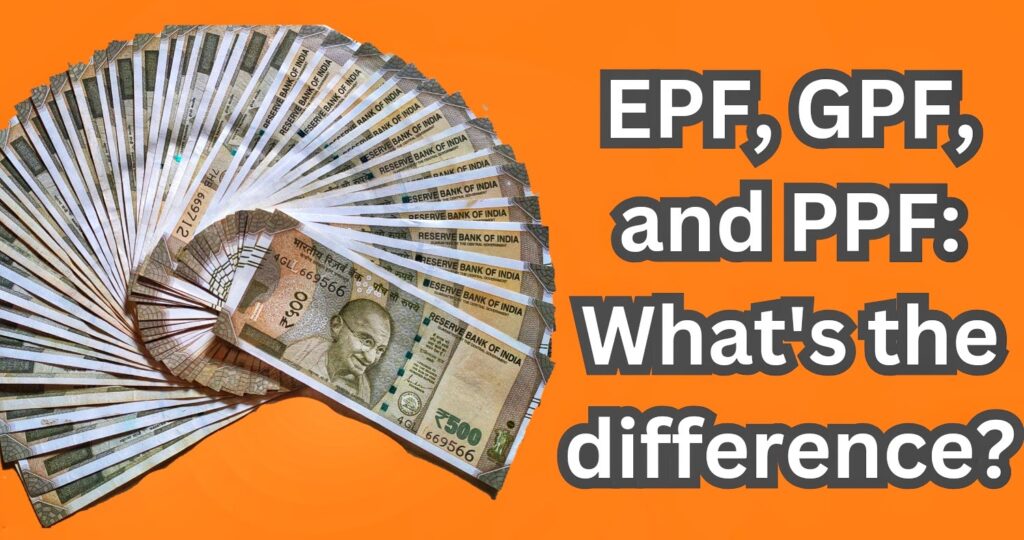
Provident fund (PF) schemes, which specifically aim to ensure financial security for the future, are of various types in India. The most prominent ones are the Employees’ Provident Fund (EPF), General Provident Fund (GPF), and Public Provident Fund (PPF). All these schemes aim to provide financial security at retirement, but their features and benefits vary.
Employees’ Provident Fund (EPF)
The Employees’ Provident Fund (EPF) is for private sector employees and is administered by the Employees’ Provident Fund Organisation (EPFO). The scheme is governed by Indian labour laws and applies to companies with 20 or more employees.
Contribution: Both the employee and the employer have to deposit 12% of their basic salary and dearness allowance in the EPF account. Of the employer’s contribution, 8.33% goes to the Employees’ Pension Scheme (EPS), and 3.67% goes to the EPF.
- Interest Rate: The interest rate for the current financial year 2024-25 is 8.25%.
- Withdrawal: The entire amount can be withdrawn from the EPF account after retirement. The account can be transferred when you change jobs. Partial withdrawals can also be made for certain situations such as buying a house or for medical expenses.
General Provident Fund (GPF)
The General Provident Fund (GPF) is mainly for government employees. This scheme is for employees who are in government service and is operated by the Department of Pension and Pensioners’ Welfare.
- Contribution: Every employee has to deposit at least 6% of his monthly salary in the GPF account.
- Interest Rate: The interest rate for the quarter of July-September 2024 is 7.1%.
- Withdrawal: The withdrawal conditions from the GPF account are somewhat similar to EPF, but it is designed primarily for government employees.
Public Provident Fund (PPF)
The Public Provident Fund (PPF) is a public scheme that can be opened by any Indian citizen, whether working in the government or private sector. The scheme is run by the central government and investing in it is optional.
- Contribution: A minimum of ₹500 and a maximum of ₹150,000 can be deposited every financial year. This amount can be deposited in one or more instalments.
- Interest rate: The current rate of interest on a PPF account is 7.1%, which is fixed by the central government every quarter.
- Withdrawal: A PPF account matures in 15 years, but partial withdrawals can be made from the seventh year onwards. The account can also be extended in blocks of 5 years each.
Conclusion
EPF- GPF-and PPF are all provident fund schemes, but their features and eligibility are different. EPF is for private sector employees, GPF is for government employees, and PPF is open to all Indian citizens. Each scheme has its specific benefits and rules that suit individual needs. To ensure your financial security, it is important to choose the right scheme.
New traffic rule: This rule has also become mandatory for pillion riders on bikes and scooters-
How to avoid GST Bill fraud: Identify real and fake GST invoices-



